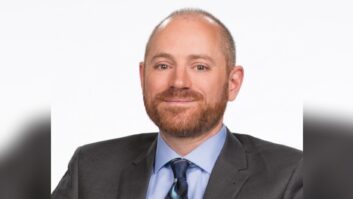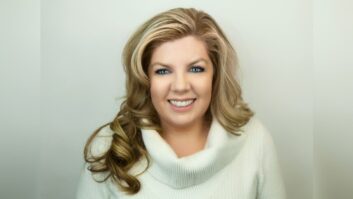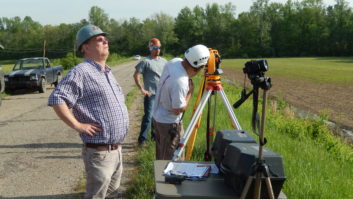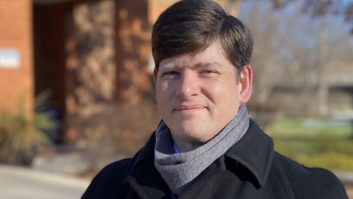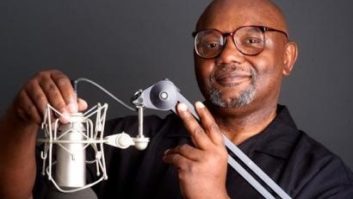SOMETHING OLD
It was 1985 and a time of great frustration for my company. The issue was a daytime AM station in Dallas that we owned at the time, a station that was profitable and had a loyal listener base, but that nonetheless had to hit the switch at sundown every evening — in some months as early as 4:45 p.m., before evening drive even got started.
The station had done well because of unique content, and in those days, AM stations still had a lot of value. Listeners knew what the band switch on their radios was for and they weren’t afraid to use it to get the content they were seeking. So this station had a lot of value and a lot of potential beyond that, but some FMs were nipping at its heels, FM stations that did not have the constraints of sunup-to-sundown operation.

Our station was a daytimer because it was located within the 0.5 mV/m 50 percent skywave contour of a co-channel Class I (now Class A) station in Iowa, a station that was over 600 miles distant and whose programming had nothing to do with Dallas, or even Texas. Or Oklahoma, Kansas, Missouri, Arkansas, Nebraska, Colorado or Wyoming.
Listeners even in that day and age didn’t quite understand the whole sign-off-at-sunset thing. We got calls, a lot of calls, from folks wondering why we couldn’t just stay on at night, and why we couldn’t be there for their clock radio alarms to wake them to in the morning. Was it a matter of finances? Personnel? Equipment? No … it’s a station in Iowa that we have to protect. Iowa? Really?
When the frustration reached a certain point, the boss directed me to do something, anything, to try to get some relief. So I started studying on the situation, looking at the history, the current situation and the possible courses of action.
Clearly, the only possibilities were a frequency change or a rule change. I quickly scratched frequency change off the list because there simply wasn’t anywhere to go in the AM band in that town, so that left a rule change, and that’s the direction I went.
The only way I knew of to argue for a rule change that would eliminate or reduce the skywave service area protection for Class I stations was to show that the purpose of that protection no longer existed and as such, that protection was not spectrum efficient or in the public interest. So I set out to do a study to see what the situation was and whether we stood a chance.
I chose WHO, a Class I on 1040 kHz in Des Moines, as the focus of my study for a number of reasons. One, it was the very Class I that our Dallas daytimer had to protect. It was centrally located and would probably be easier to study than a station with a lot of coastal overlap. And it used a Franklin antenna, which provided it with more “throw” than a lot of other Class I stations. In short, it was a worst-case example.
My first step was to plot the protected 0.5 mV/m 50 percent skywave contour of WHO. Next, I worked my way across the area within that contour and plotted all the high-power Class II AM night interference-free contours (on any frequency). I followed that up with a plot of the bigger FM 54 and 60 dBu contours (for Class B and C/A stations, respectively).
After shading in all those contours, I did a series of population counts, finding all the centroids in the white areas and summing their populations. That wasn’t easy, and it resulted in reams and reams of fanfold, tractor feed computer paper piled up on, beside and under my desk.
The verdict: There were roughly 600,000 people within those white areas. That may seem like a lot, but it was a small percentage of the total population within the WHO protected skywave service contour. That would be my argument, then — that for the sake of this small percentage, we were protecting this huge area and depriving the listeners of an untold number of daytime-only stations of nighttime service by their station of choice.
I put together an exhibit and our lawyer did his thing, and we filed a petition for rulemaking. And nothing. Nothing ever happened. Not an acknowledgement, not a dismissal, nothing. We followed up time and again and got nowhere, and eventually we gave up — mostly because by that time, we had purchased a CP for a Class II station in the market and were working on building that out. That station would have a 24-hour signal, solving our immediate problem.
SOMETHING NEW
Fast forward some 33 years. In October 2018, the FCC released a Second Further Notice of Proposed Rulemaking in the Revitalization of the AM Radio Service proceeding. In this notice, the FCC, under the leadership of Chairman Pai, at long last deals with the elephant in the room: Class A nighttime protections.
In this document, the FCC makes pretty much the same argument that I did in 1985: that the current situation does not warrant the level of protection that Class A stations currently receive. If the percentage of population that cannot receive any aural service other than Class A skywave signals at night was low in 1985, it’s zero in 2018. While in 1985, long-distance over-the-road truckers may have faithfully listened to Bill Mack via the WBAP skywave signal at night, but in 2018 they’re pretty much listening to The Highway, Outlaw Country or Willie’s Road House on SiriusXM. That’s a whole different kind of “skywave.”
So the FCC has given us some choices for critical and night protections for Class A stations. For critical hours, that period two hours after sunrise and two hours before sunset, the options are:
1. No protection from skywave interference, or
2. Protection to the 0.5 mV/m groundwave contour.
For nighttime hours, the choices are:
1. Prohibited overlap of the Class A’s 0.5 mV/m groundwave contour by potential interferers’ 0.025 mV/m 10 percent skywave contours, or
2. Protection by other stations of the greater of the Class A’s 0.5 mV/m groundwave contour or its calculated 50 percent exclusion RSS night interference free contour.
Of course, the Class A licensees (collectively the AM Radio Preservation Alliance) will object to both of these options for both critical and nighttime hours protections, and who can blame them? They are incumbents and have long enjoyed the existing protections, which encompass a lot of real estate, and now the FCC is proposing what amounts to “taking” of much of that real estate in an action comparable to an eminent domain proceeding.
On the other hand, what we have now is not spectrum efficient, and it is not justified by any large-scale need. The reverse is true, in fact, in that a lot of daytime-only stations cannot provide night service to their communities while those protections are in place.
This is not an easy issue, and the options are not as clear cut as the multiple-choice offerings in the rulemaking may seem to indicate. One way or the other, we will be robbing Peter to pay Paul. Someone will have to lose so that someone else can win. The trick will be finding the right balance.
It’s going to be interesting.
Cris Alexander, CPBE AMD DRB, is director of engineering of Crawford Broadcasting Co. and technical editor of RW Engineering Extra.

